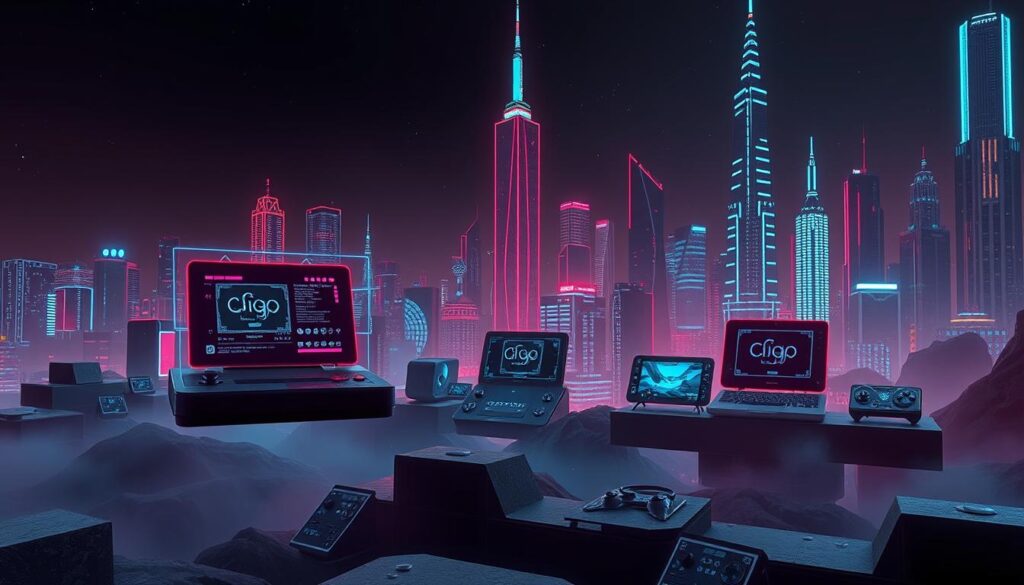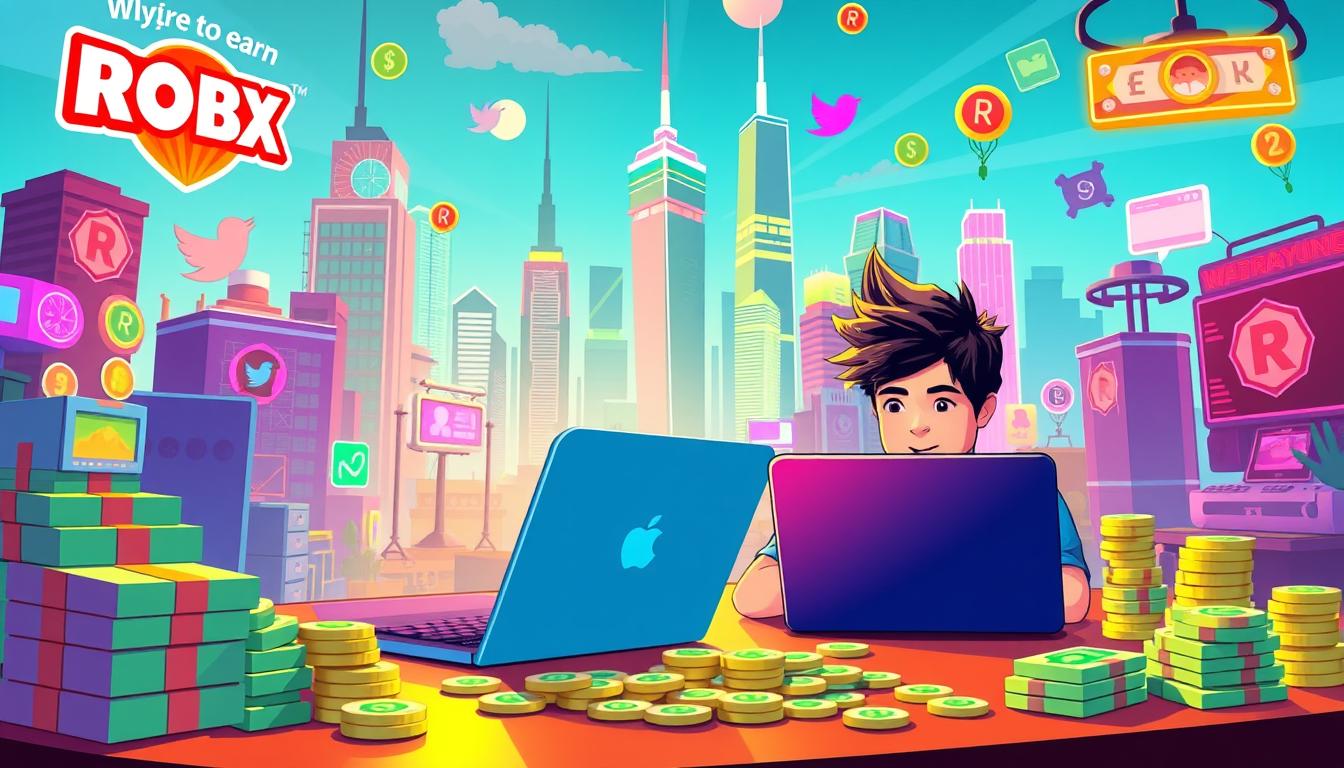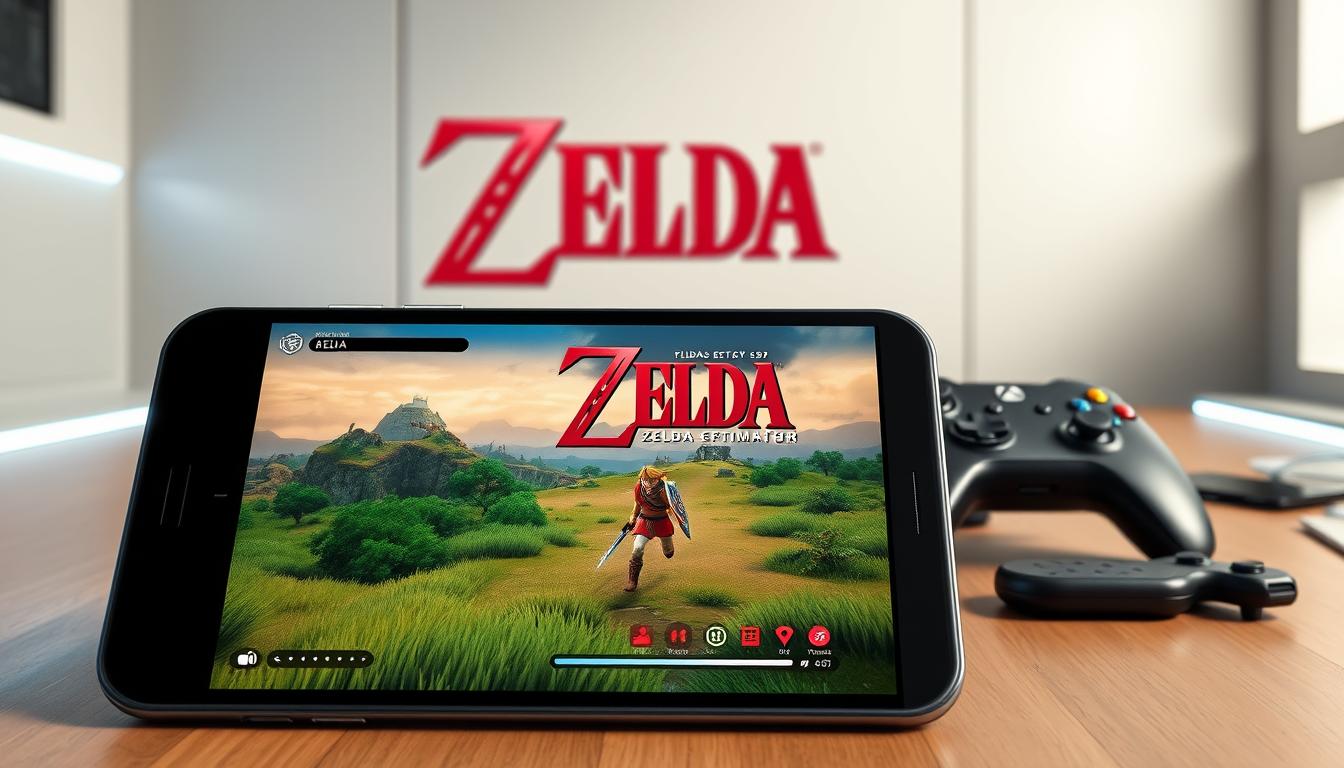Anúncios
Ever wondered why your favorite 2D platformers don’t run smoothly on low-power devices? We often overlook how these classics perform on high-end consoles. But with mobile gaming on the rise, many face device limitations.
Emulators can greatly improve gaming on 2D platformers, especially on smartphones and tablets. We’ll share strategies to boost your gaming experience. This way, you can enjoy classic titles without losing performance.
Understanding 2D Platformers in Gaming
2D platformers are a special type of game that scrolls sideways. They make players jump, climb, and navigate spaces. Games like Super Mario Bros. and Sonic the Hedgehog show how these mechanics work. They challenge players with timing and precision.
Anúncios
Even though 2D platformers seem simple, they are actually complex. Each level brings new challenges that test players’ strategies. This mix of simplicity and complexity keeps players hooked for years.
When making games for low-power devices, 2D platformers are key. They don’t need fancy 3D graphics to be fun. With the right graphics and performance, they can be just as engaging on older hardware.
Challenges of Gaming on Low-Power Devices
Low-power devices, like budget smartphones and tablets, face big gaming challenges. They have limited CPU and GPU power, making it hard to run games that need lots of graphics. This leads to a lot of lagging.
Anúncios
These devices also have less memory, which makes games run slowly. This means games take longer to load and can crash more often. Plus, playing games for a long time can quickly drain the battery. This forces users to choose between playing games longer or keeping their device charged.
It’s important for both game developers and players to know about these challenges. With this knowledge, they can make games that work better on low-power devices. This way, everyone can enjoy playing games, even with some performance issues.
The Role of Emulators in Gaming Performance
Emulators connect classic 2D games with today’s devices, boosting gaming performance. They mimic the needs of newer gaming systems. This lets gamers enjoy their favorite games without spending a lot on hardware.
Emulators manage resources well, making games run smoothly on less powerful devices. They optimize memory and CPU use. This means games load faster and play better, making gaming fun again.
Emulators also improve graphics on low-end devices. They adjust graphics settings to make 2D games look great. This keeps classic games looking sharp and playing well, even on older systems.
Benefits of Using Emulators for 2D Games
Emulators offer many benefits for those who love 2D games. They give access to a huge library of classic games that are hard to find today. This brings back happy memories and introduces new players to classic favorites.
Emulators also let players improve the graphics of their games. They can change the resolution and graphics settings to make games look better than they did on the original consoles. This makes games look sharper and more vibrant, giving them a new life.
Another great feature of emulators is the ability to adjust control settings. Players can change how the game responds to their input to fit their style. This makes playing games more enjoyable and personal. Plus, saving the game at any time means you won’t lose your progress, making it easier to tackle tough parts again.
To sum up, here’s how emulators compare to original hardware:
| Feature | Original Hardware | Emulator |
|---|---|---|
| Nostalgic Game Library | Limited access | Extensive access |
| Graphics | Standard graphics | Enhanced graphics options |
| Control Customization | Fixed controls | Customizable controls |
| Save States | Limited save options | Unlimited save states |
In conclusion, using emulators for 2D games greatly improves the gaming experience. It keeps the classic feel of old games alive.
Choosing the Right Emulator for Low-Power Devices
Choosing the right emulator for low-power devices is key for a great gaming experience. First, check if the emulator works well with the games you want to play. Each emulator is good at supporting different games, so pick one that fits your needs.
Compatibility with Game Titles
Not every emulator works well with every game. Look closely at how well an emulator works with games. Emulators like RetroArch and PPSSPP are popular, but make sure they support the games you like. Here’s a comparison of their compatibility:
| Emulator | Supported Systems | Notable Games | Performance on Low-Power Devices |
|---|---|---|---|
| RetroArch | Multiple Platforms | Super Mario World, Sonic the Hedgehog | Very good |
| PPSSPP | PlayStation Portable | God of War: Chains of Olympus, Daxter | Excellent |
User Interface and Experience
A good user interface makes using an emulator easier and more enjoyable. Emulators that are easy to use save time and reduce frustration. A well-designed interface lets you quickly find game settings and controls, improving your gaming.
Emulators for Better Gaming Performance on Low-Power Phones for 2D Games
For fans of 2D platformers, low-power phone emulators are a great choice. They are made to boost gaming performance, even on devices with limited power. This means you can enjoy your favorite games without worrying about your phone’s specs.
My Boy! is a top pick for those looking for a GameBoy Advance emulator. It’s designed to work well on smartphones, even those with less power. It offers smooth gameplay, state save, cheat support, and customizable controls. This makes sure your gaming experience is top-notch.
SNES9x is another great option for playing classic Super Nintendo games. It’s built to use your phone’s resources wisely, keeping visuals and animations smooth. It also has a user-friendly interface and settings to improve performance on low-power phones.
These emulators keep getting better, showing that you can have great gaming on low-power devices. You can play your favorite 2D games for hours, enjoying every moment without worrying about your phone’s power.

Optimizing Graphics for Low-Power Devices
Improving graphics on low-powered devices is key for better gaming. Choosing the right image formats and using efficient rendering techniques helps a lot. These steps make games run smoother on various devices.
Choosing the Right Image Formats
Choosing the right image formats is crucial for graphics optimization. PNG is better than JPEG, especially when you need transparency. PNGs are high-quality and light, which is great for low-power devices. The right formats prevent images from slowing down rendering.
Minimizing Draw Calls
Reducing draw calls is important for better performance. Combining multiple tasks into fewer calls makes rendering more efficient. This is especially helpful for low-powered devices, as it makes games run smoother and faster.
Utilizing Efficient Rendering Techniques
Using techniques like batching and atlasing boosts performance. These methods let the graphics engine handle more in one go. This is super helpful in low-power settings where resources are limited.
Implementing Efficient Coding Practices
Efficient coding is key in game development, especially for low-power devices. A careful coding approach saves resources and boosts gameplay. Performance optimization techniques offer big benefits.
Modular coding is a great method. It breaks down code into smaller parts. This makes debugging and updates easier, improving game efficiency. Choosing the right data structures also helps. It can cut down memory use, making games run smoother.
Algorithms that lower CPU load are crucial. For example, using quad trees for collision detection saves time. It only checks for collisions where needed. Learning these coding tips can help developers make their games better. Guides like this one can be very helpful.
The Importance of Battery Management
Effective battery management is key to a great gaming experience on low-power devices. It ensures devices stay working long enough without running out of battery too fast. Learning to manage resources well can make games last longer and devices last longer too.
Managing Resource Consumption
To keep batteries going during low-power gaming, managing resources is crucial. Here are some important strategies:
- Limiting background processes: Cutting down on apps running in the background saves battery.
- Lowering graphic settings: Simplifying graphics uses less power but still offers fun gameplay.
- Using performance profiles: Settings that adjust game demands help keep things stable.
- Monitoring CPU and GPU usage: Watching these resources helps make quick battery-saving tweaks.
Testing and Profiling Performance on Emulators
Testing emulators is key to better gaming on limited devices. It helps find problems in gameplay and graphics. Emulators let developers test games in different settings, making it easier to find issues.
Gameplay profiling tools are very important. They track frame rates, input lag, and resource use. This gives a full picture of how a game runs under different conditions. With device profilers, developers can improve the gaming experience.
There are many ways to boost performance testing. Running benchmarks sets a baseline for a game’s performance on various devices. This shows current problems and helps in making the game better.
Knowing a lot about performance testing and profiling is essential. It ensures games run smoothly on emulators. This way, players get the best gaming experience, no matter their device.
Cross-Platform Compatibility Considerations
Today, making 2D games that work on many devices is key. Developers need to make sure their games run well on different platforms like Android and iOS. They must think about the hardware and how each platform is different.
Rendering is a big deal. Each platform has its own graphics processing. This affects how games look. Making assets fit these different settings helps keep the game looking good everywhere.
Input handling is also important. Devices have different ways to control games, like touchscreens or controllers. Developers must make games that work well with all these controls.
Layout design is another area to focus on. Screens and resolutions vary a lot. Using responsive design helps games look great on any screen.
| Aspect | Android | iOS |
|---|---|---|
| Rendering Capabilities | Varied GPU performance, wide range of devices | Consistent performance, optimized for specific hardware |
| Input Methods | Touchscreen, gamepad support | Touchscreen, gamepad support, MFi controllers |
| Screen Sizes | Diverse sizes, requires adaptive layouts | Standardized sizes with different resolutions |
| OS Fragmentation | High, varied Android versions | Low, consistent updates |
Community Support and Resources for Emulator Users
The gaming community is key in helping emulator users. Online forums and resources offer valuable insights. They help with troubleshooting and optimization tips, bringing users and developers together.
Online Forums and Tutorials
Online forums are essential for sharing knowledge about emulators. Users can ask questions and share solutions. Tutorials guide both new and advanced users on how to improve their gaming.
Open Source Emulator Projects
Open source projects are big in the emulator world. They offer customizable options for users. These projects have documentation and spaces for feedback, leading to better performance and compatibility.
| Resource Type | Examples | Description |
|---|---|---|
| Online Forums | Reddit, Emulator Zone | Platforms for discussion, troubleshooting, and sharing tips. |
| Tutorials | YouTube, GitHub | Step-by-step guides on using emulators effectively. |
| Open Source | RetroArch, SNES9x | Collaborative projects that allow user modifications and enhancements. |
Using Game Engines for Enhanced Performance
Game engines like Unity and Godot are great for making 2D games run smoothly on low-power devices. They come with tools that help improve game performance. This way, games can look good and run smoothly.
Unity helps manage graphics and sound well, which is key for devices with less power. Godot makes it easy to add complex game features without using too many resources. This is perfect for devices that don’t have a lot of power.
Writing code well is crucial for games to run fast on limited hardware. Both Unity and Godot support building games in a modular way. This means developers can make parts of the game that can be used over and over again. This makes games run faster and smoother on different devices.
| Feature | Unity | Godot |
|---|---|---|
| Asset Management | Advanced asset optimization tools | Simplified resource integration |
| Performance Tuning | Profile and adjust settings dynamically | Automatic resource loading for efficiency |
| User Community | Extensive support and resources | Strong open-source community |
| Scripting Language | C# and Visual Scripting options | GDScript for rapid development |
Understanding Input Handling in 2D Games
Input handling is key for great gameplay in 2D games. It’s important because different devices have different abilities and ways of interacting. This part talks about making gaming controls work well on all kinds of devices, so players can enjoy the game no matter what they’re using.
Adapting Controls for Different Devices
Getting controls to work well on different devices is a complex task. Keyboards and mice are one thing, but touch screens on phones are another. How well controls work can really affect how much fun a player has. For example, controls should fit how people naturally hold and move their hands on different devices.
The table below shows how input handling changes from one device to another:
| Device Type | Input Handling Features | Advantages | Challenges |
|---|---|---|---|
| Keyboard & Mouse | Precise control mapping, support for shortcuts | High precision, customizable layouts | Learning curve for new players |
| Game Controllers | Analog and digital inputs, rumble feedback | Ergonomic design, tactile buttons | Limited compatibility with some games |
| Touch Screens | Gesture controls, on-screen buttons | Intuitive interaction, accessibility | Potential for accidental touches, screen size limitations |
To make games better for everyone, developers need to focus on making controls easy to use. They should make sure controls fit the device well and keep players interested.
Future Trends in 2D Game Emulation
Technology keeps getting better, and 2D game emulation is no exception. We can expect to see better algorithms for faster rendering. This means better graphics and smoother gameplay on devices with less power.
Artificial intelligence could also play a big role. AI can help emulators use resources better. This could make games run faster and load quicker, making gamers happier.
Cloud services are another area to watch. We might see games stored in the cloud, so you can play them anywhere. This would make playing 2D games more flexible than ever.
New tools for making 2D games could change everything. These tools might make it easier for developers to create and fix games. This could lead to even better games for us to play.

Conclusion
Exploring emulators and 2D gaming shows how important gaming performance is, especially for low-powered devices. Emulators are powerful tools that make classic 2D games better. They help overcome hardware limits, making games more enjoyable.
Our insights show that the right emulator can fix lag and poor graphics. This way, gamers can still enjoy their favorite games. It’s all about finding the right balance between performance and fun.
In the end, emulators are key in 2D gaming. As technology gets better, we can enjoy old games even more. Thanks to new tech and community help, the future of gaming looks bright. It means we can keep loving 2D platformers for years to come.
FAQ
What are emulators and how do they enhance the gaming experience for 2D platformers?
Emulators are software that makes old games work on new devices. They help games like “Super Mario Bros.” and “Sonic the Hedgehog” run smoothly on devices with less power. They make graphics better, adjust controls, and add features like saving games.
What challenges do low-power devices face when running 2D games?
Devices with less power, like cheap phones and tablets, have trouble running games. They lack strong CPUs and GPUs, have less memory, and use up battery fast. This leads to slow graphics, low frame rates, and a bad gaming experience.
How do I choose the right emulator for my device?
Pick an emulator that works well with your favorite games and is easy to use. RetroArch and PPSSPP are good choices for mobile devices. Make sure the emulator makes your games run smoothly.
What techniques can optimize graphics for low-powered devices?
To improve graphics, use light image formats like PNG. Also, combine rendering tasks to reduce draw calls. Techniques like batching and atlasing can make games run better on less powerful devices.
Why is battery management important for gaming on low-power devices?
Managing battery life is key to enjoying games without running out of power. Use tools to control resource use and adjust settings to play longer.
What methods can be used for testing and profiling emulator performance?
Use tools like device profilers and benchmarks to find out what slows down games. This helps make the emulator run better for a better gaming experience.
How can I ensure cross-platform compatibility for 2D games?
Make games work on different devices by adjusting how they look and feel. Make sure controls and layout are the same on Android and iOS.
Where can I find community support and resources for emulator users?
The gaming community has forums, groups, and tutorials to help with emulator issues. Open source projects also offer great support.
What role do game engines play in enhancing performance for 2D games?
Engines like Unity and Godot help make 2D games run smoothly. They have tools for optimizing assets and coding for better performance on less powerful hardware.
How can input handling be adapted for different devices?
Adjust controls to fit different devices. Use touch controls for phones and keyboard and mouse for PCs. This makes games fun for everyone.
What future trends should we expect in 2D game emulation?
Expect better rendering, smarter resource use, and new tools for better performance. These advancements will make games run smoothly on less powerful devices.




